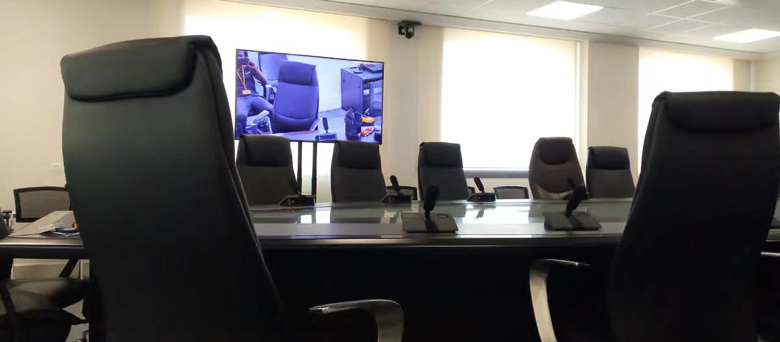
In modern office environments, video conference systems have made remote communication more convenient, but they also come with security risks. Therefore, ensuring the security of video conference systems is crucial. Here are some effective security measures to help organizations protect conference content and user information.

To ensure the security of a video conference audio system, it is necessary to establish effective authentication mechanisms. Only authorized users should be able to join meetings or access conference content. Common authentication methods include password verification, two-factor or multi-factor authentication, etc. These measures can effectively prevent unauthorized users from intruding, ensuring the confidentiality and security of the meeting. Furthermore, video conference systems should regularly review user permissions to ensure that only eligible personnel can enter meeting rooms, thereby further strengthening security.
Data encryption is an important component of audio video conference system security assurance. By adopting encryption technologies that comply with international standards, it is possible to encrypt conference content, ensuring the security of data during transmission and storage. Common encryption technologies include symmetric encryption and public key encryption, among others. These technologies can effectively prevent data leaks and protect participants' private information. Additionally, video conference systems can set up encrypted transmission and storage to ensure that sensitive information is not accessed illegally, thereby enhancing the overall security of the system.

In video conference systems, it is essential to set up appropriate access control permissions. By setting different access permissions for different users, it can be ensured that they can only access meeting content within their permission range. Additionally, to prevent malicious attacks, deploying firewalls and intrusion detection systems is necessary. These systems can timely identify and block unauthorized access behaviors, protecting the safety of conference content. Regularly conducting security vulnerability detection and patching can further enhance the system's protection capabilities, providing a more secure meeting environment for users.
When using video conference systems, the security of endpoint devices is equally crucial. Implementing effective endpoint protection measures can prevent the intrusion of malware and viruses. Performing security checks and Antivirus processing on devices participating in the conference, or using secure virtualization technology to protect endpoint devices, can all effectively enhance security. Moreover, organizations should regularly conduct security training for devices to increase users' security awareness, enabling them to better protect conference content and device security.

Establishing a content auditing mechanism is also an important measure to ensure the security of video conference systems. By recording and monitoring conference content, it is possible to timely discover and handle security incidents. Setting up sensitive word filters and content review functions helps prevent the leakage of sensitive information. By monitoring the conference process, organizations can ensure the compliance of conference content and reduce potential risks.
Additionally, choosing a reliable video conference system manufacturer and service provider is also a key step to ensuring security. Through these measures, organizations can ensure the security of video conferencing, providing a stable and reliable environment for remote communication.